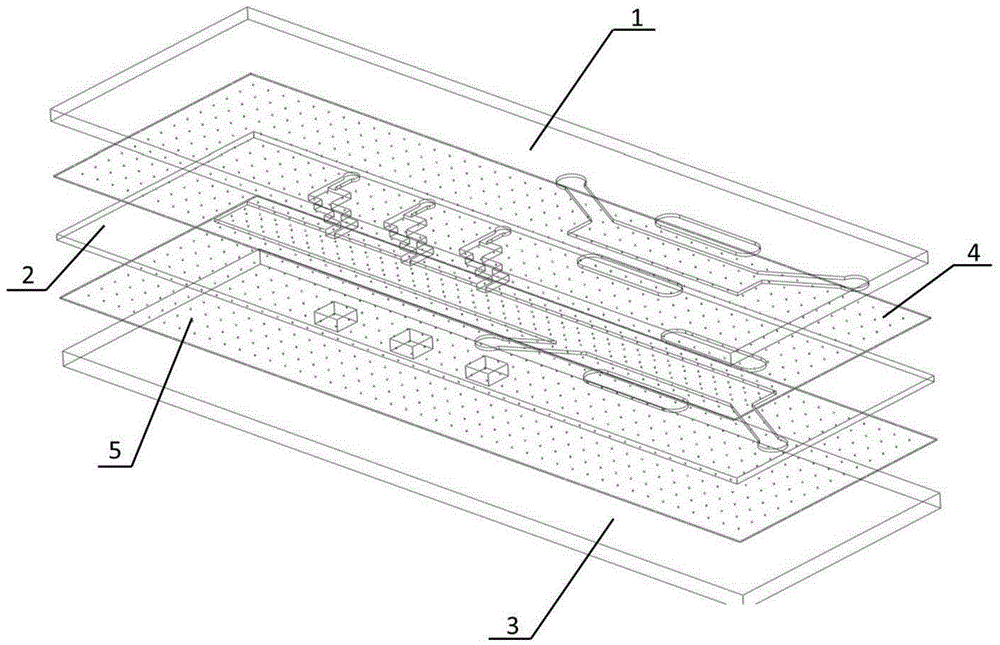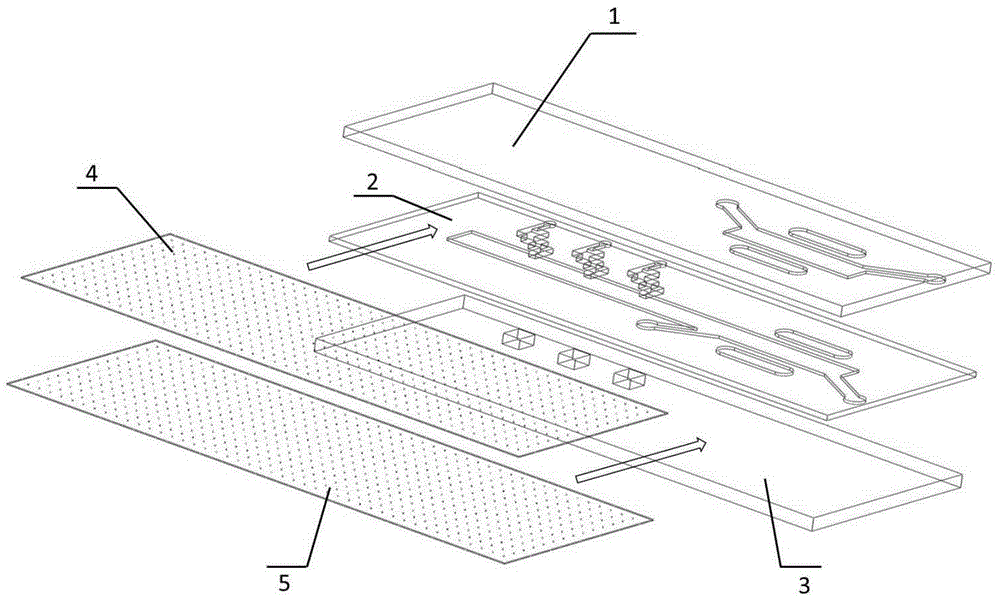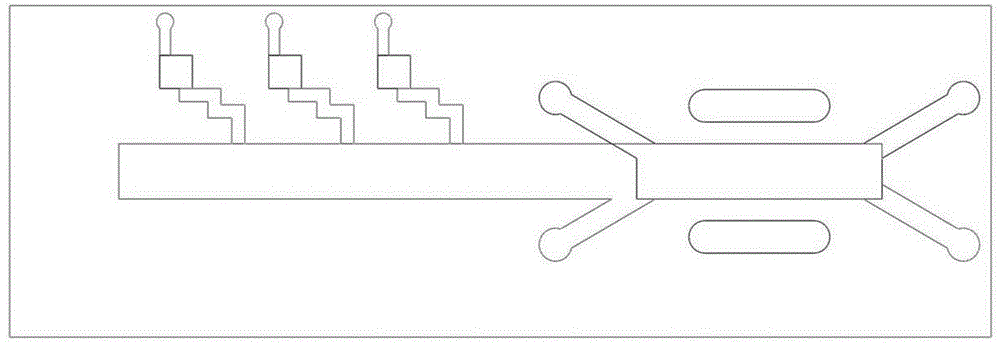Bionic micro-fluidic chip for simulating in vivo tumor cells and metastasis microenvironment
A microfluidic chip and tumor cell technology, applied in the field of bionic microfluidic chips, can solve the problems of long experimental period, expensive animal models, unable to correctly reflect the physiological state of lung cancer cell metastasis, etc., to ensure gas exchange and easy operation. , the effect of good biocompatibility
- Summary
- Abstract
- Description
- Claims
- Application Information
AI Technical Summary
Problems solved by technology
Method used
Image
Examples
Embodiment 1
[0058] Example 1 A bionic microfluidic chip for simulating the microenvironment of lung cancer metastasis in vivo
[0059] The microfluidic chip of the present invention is an airtight whole formed by interlacing and irreversible sealing of three layers of PDMS substrates and two layers of porous PDMS membranes; the first layer of PDMS substrate 1 is provided with channels 11 for air circulation, The inlet 12 and outlet 13 for liquid to enter and exit are respectively located in the upper half of the vacuum channels 14 and 15 on both sides of the channel 11; the second layer of PDMS substrate 2 is provided with a channel 21 for liquid circulation and an inlet 22 for liquid to enter and exit and the outlet 23, respectively located in the lower half of the vacuum channels 14, 15 on both sides of the channel 21, the side of the channel 21 is provided with three connecting channels 211, 212, 213 extending outwards, the connecting channels 211, 212, 213 The ends are respectively pr...
Embodiment 3
[0073] Example 3 Construction of a bionic model simulating the microenvironment of lung cancer cell metastasis in vivo
[0074] 1. 2D culture of lung cancer cells in a microfluidic chip
[0075] (1) The microfluidic chip is sterilized by ultraviolet irradiation, and the porous PDMS membrane is coated with BME. The specific coating process is: pretreatment of the chip, so that cells can better adhere to the porous membrane surface of the chip. Dilute BME (Cultrex basement membrane extract, R&D Systems, McKinley Place, MN, USA) at a ratio of 1:10, mix well, inject into the sample inlet of the microfluidic chip with a micro-sampler, and wait for the gel to solidify overnight in the incubator.
[0076] (2) The microfluidic chip is turned over, that is, the third PDMS substrate faces upward. Collect the suspended mononuclear cells into a centrifuge tube, centrifuge at 1000 rpm for 5 minutes, discard the supernatant, and add fresh medium to prepare a cell suspension. The mononucle...
Embodiment 4
[0086] Example 4 Detection of the effectiveness of the bionic model for simulating the metastatic microenvironment of lung cancer cells in vivo
[0087] Evaluate the effectiveness of the bionic model of the simulation body lung cancer cell transfer microenvironment constructed in Example 3, and complete it through the following experiments:
[0088] 1. Detection of cell viability
[0089] Detection method: absorb the culture medium in the channel in the chip system, inject PBS into the chip channel, and wash the cells of different treatment groups twice; then pump H33342 (1:100) into the staining for 15 minutes, and wash twice with PBS solution; Pump in PI staining (1:200) for 5 minutes, wash with PBS solution twice; under a microscope, observe the fluorescence intensity under the excitation of the corresponding excitation light and record it by taking pictures.
[0090] 2. Detection of co-localization of lung cancer cells and bronchial epithelial cells
[0091] The cell tra...
PUM
| Property | Measurement | Unit |
|---|---|---|
| pore size | aaaaa | aaaaa |
| length | aaaaa | aaaaa |
Abstract
Description
Claims
Application Information
 Login to View More
Login to View More - R&D
- Intellectual Property
- Life Sciences
- Materials
- Tech Scout
- Unparalleled Data Quality
- Higher Quality Content
- 60% Fewer Hallucinations
Browse by: Latest US Patents, China's latest patents, Technical Efficacy Thesaurus, Application Domain, Technology Topic, Popular Technical Reports.
© 2025 PatSnap. All rights reserved.Legal|Privacy policy|Modern Slavery Act Transparency Statement|Sitemap|About US| Contact US: help@patsnap.com



